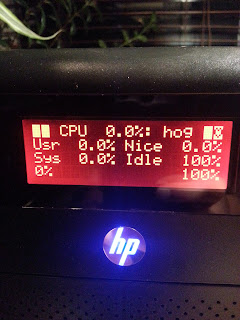Daniel Leidert: Install automatically starting XBMC to N54L microserver under Debian Wheezy 7.7
This is a followup to my previous post about getting sound output from the Sapphire Radeon HD 6450 card in my HP N54L microserver via HDMI. This post will describe, howto install XBMC from Wheezy backports and how to automatically start it. Again, there are vaious ways and I'll only describe mine. Further, this is, what I did so far: enable the audio output for the Radeon card and install X.org together with lightdm. Step 3 - Install XBMCThis is a pretty easy task. I've chosen to install XBMC 13.2 from the Wheezy backports repository.
# apt-get install -t wheezy-backports xbmcStep 4 - Automically start XBMCThere are various ways; some involve starting it a s a service using init scripts f r sysvinit or upstrart or systemd. You'll easily find them. I've chosen to create a user, automatically log him into X and start XBMC. The user is called xbmc.
# adduser --home /home/xbmc --add_extra_groups xbmcI used to choose a password. But I wonder, if using --disabled-password would work too? Next I adjusted /etc/lightdm/lightdm.conf. Below are only the differences to the stock version of this file. I haven't touched other lines.
[SeatDefaults]The file /usr/share/xsessions/XBMC.desktop is the stock one, no changes made. After restarting lightdm:
greeter-session=lightdm-gtk-greeter
user-session=XBMC
autologin-guest=false
autologin-user=xbmc
autologin-user-timeout=0
# service lightdm restartXBMC is started automatically. If anything goes wrong or doesn't work, I suggest to check /var/log/auth.log, /home/xbmc/.xsession-errors and /var/log/lightdm/*.log. In a few cases it seems necessary to login the user xbmc manually once although it wasn't necessary here.JFTR: When I checked /var/log/auth.log I saw a few errors and installed gnome-keyring too:
apt-get install --install-recommends gnome-keyringStep 5 - Useful packagesThere are some packages, which might be useful running XBMC, e.g. ConclusionI'm now running XBMC on top of Debian Wheezy on the N54L microserver without a bloated desktop environment. The system automatically starts the XBMC session on start/reboot. Video and sound are working fine, though it was necessary to install recent firmware and a recent kernel from Wheezy backports to get it done. Thanks to the whole OSS community for aksing, for answering, for blogging, for using and for continue developing! I currently enjoy the results :)









